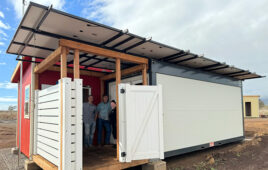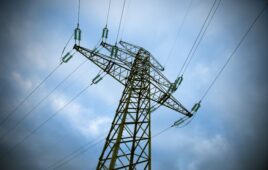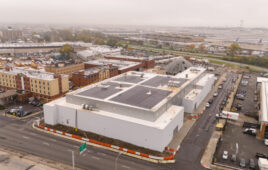
South Carolina’s Republican governor Henry McMaster signed a bill that will help solar expand in the Palmetto State.
Group wants to extend the solar ITC in areas with closing coal mines
Washington, D.C.
A report by the Institute for Energy Economics and Financial Analysis (IEEFA) found the federal solar tax credit should be extended by at least four years in areas with closing coal mines. The federal ITC is due to begin stepping down annually — from 30% currently to 10% by 2022. “Scheduled curtailment of the tax credit comes at the worst possible moment for vulnerable communities that are facing impending closure of a power plant or a coal mine that provides revenues critical for government services,” said Tony Skrelunas, Navajo, MBA, lead author of the brief.
50+ California organizations ask legislators to protect community choice energy
Sacramento, California
The California Alliance for Community Energy sent a letter to California’s state legislature asking them to protect community choice energy programs from being undermined by the Public Utilities Commission (CPUC). The letter was signed by 50 statewide and local organizations including the Local Clean Energy Alliance and the Oakland Climate Action Coalition. The letter outlines the group’s belief that “the CPUC’s attack against community choice has been unremitting, and ratepayers — whether in community choice programs or not — and their communities have been the losers.”
New report quantifies benefits of community solar in Minnesota
Saint Paul, Minnesota
A report by solar nonprofit organizations finds Minnesota’s copious amount of community solar benefits the state in many ways, from expanding solar jobs to giving farmers another source of income via solar leases and royalty payments. More than 14,000 Minnesota customers have signed up for community solar, including over 12,000 households and 2,000 business, non-profit and public-sector customers.
Republicans introduce bill to help increase solar development in Maine
Augusta, Maine
Maine’s Senate Minority Leader Dana Dow (R-Waldoboro) introduced a bill that would eliminate many road blocks to solar development in the state. Dow said the bill would mostly help medium-sized solar projects like school districts and municipal buildings, according to WABI. Similar bills have failed to pass in the state legislature in years prior, but this latest iteration has bipartisan support.
South Carolina governor signs Energy Freedom Act
Columbia, South Carolina
Governor Henry McMaster signed the omnibus Energy Freedom Act in May. The law lifts unnecessary restrictions to expand affordable solar options and allow solar to be a competitive energy source in the state. The bill also extends net metering through 2021 and provides pathways for community solar to grow.
This commonsense clean energy policy passed UNANIMOUSLY though both the House & Senate this year – a historic level of strong & unified bipartisan support for #solar progress the likes of which we’ve maybe never seen before. Huge thanks again to all who were part of this win. pic.twitter.com/CooKDbr9Wq
— Vote Solar (@votesolar) May 21, 2019
Maryland extends community solar pilot program through 2022
Annapolis, Maryland
Governor Larry Hogan signed HB 683 to extend Maryland’s community solar pilot program through 2022 while the state’s Public Service Commission determines a long-term path forward for the program. The law also expands the generating capacity per system and lifts the maximum number of subscribers per project.
Maryland officially commits to 50% renewables by 2030
Annapolis, Maryland
Maryland’s commitment to 50% renewable energy by 2030 became law after Governor Larry Hogan allowed it to pass without his signature on May 22. According to the Sierra Club, the 50% by 2030 RPS will include a jump from 2.5% in-state solar to 14.5% by 2030. The law also increases funding for clean energy workforce development.
Colorado governor signs swath of renewable energy bills
Denver, Colorado
Colorado governor Jared Polis signed seven renewable energy bills into law in May ranging from curbing greenhouse gas emissions to modifying rules that limited the expansion of community solar projects, according to the Denver Post. The latter law increased the maximum size of a community solar array from 2 MW to 5 MW. All of the bills aim to help bring the state closer to its goal of 100% renewable energy by 2040.





Dear Kelsey,
If you are ever in Montana, I invite you to visit my lab and pyramid house. Bring your curiosity. I have lived off the grid for twenty five years. I have Open house tours at least four times a year to show what is possible. Call my cell 406-548-2779 if you choose. T hank you and keep the good info coming !